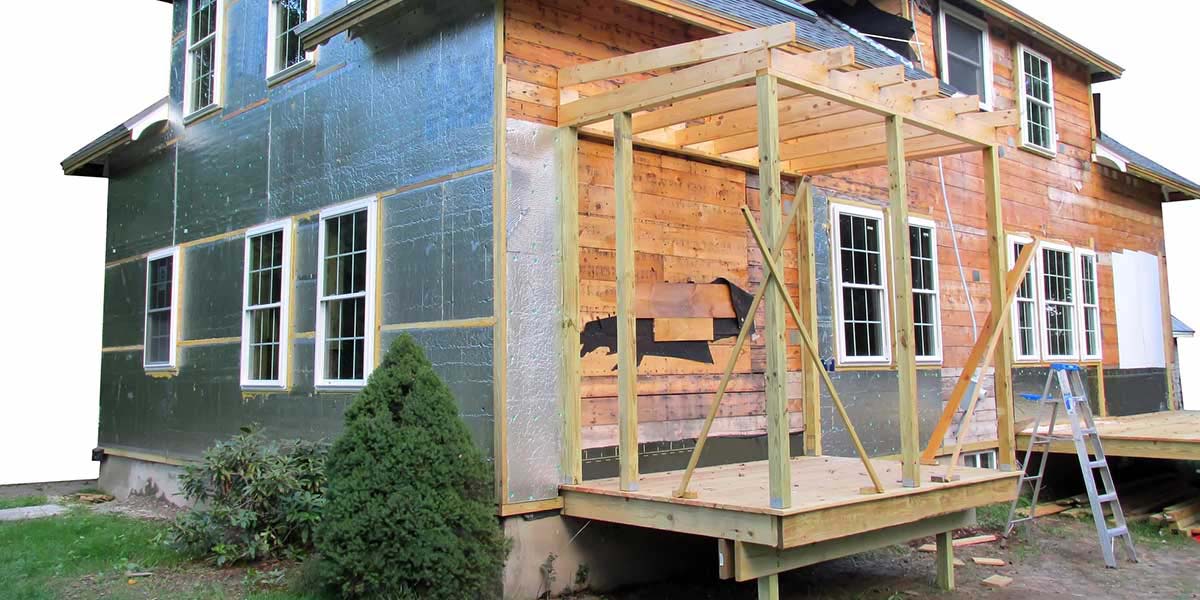
The sounds of tools whirring and banging as work begins on your home expansion can be exciting, but there’s a lot of preparation that takes place before you get to that point. Use our to do list for building a home addition to make sure you have everything you need to create your remodeling plan.
According to HomeAdvisor, the average cost of a room addition is $45,504. The specific cost of your expansion may range from $3,700 to $150,000 depending on what you’re building and how much work it requires.
Use the info below as an expected starting point to make sure you have the funds you need and to know what to expect from contractor quotes.
How Much Does a Home Addition Cost? |
||||
|---|---|---|---|---|
|
|
|
|
|
|
|
|
|
|
|
|
*Data courtesy of HomeAdvisor.
Keep in mind that the cost will likely be higher in more expensive areas of the country or if your property has special conditions that the contractors need to work with, like a sloping landscape. Increase your budget to give yourself a little wiggle room for unexpected costs. As the building process takes place, unpredictable issues may inflate the price of your original estimate.
Pro-Tip: You can save thousands of dollars on project costs by doing some of the work yourself instead of relying on a pro, like demoing your kitchen or removing the countertops. If you take a DIY approach at any point in the process, rent a 30 yard dumpster to clear the mess.
Your property lines define where your land ends and your neighbors’ properties begin. You can find these on your property deed, on the survey you received when you bought your home or at the county assessor’s office.
Knowing where your property ends will be useful on multiple fronts:
Pro-Tip: Check with city hall to make sure you’re following all building codes and that you get all the permits you need to add on to your home’s existing structure.
Your current floor plan is a helpful starting point when deciding how to add onto your house. Looping in an expert as early as possible in the designing process will keep the project moving. A contractor will need to work with professional drawings when building your home expansion, and it’s also helpful to have these when scouting out potential contractors to get accurate and comparable estimates.
Here are some things to remember when designing your home addition:
|
|
|
|
|
|
|
|
|
|
|
|
|
|
|
|
|
|
|
|
|
|
|
|
*Data courtesy of HomeAdvisor and Legal Eagle Contractors, Co.
Pro-Tip: Consider working with a design-build company so you have one point of contact creating the plans for your home expansion and physically constructing it. This means you won’t need to hire multiple companies and can reduce costs.
Nikki Agiunaga with Sebring Design Build says to think of contractor research like dating. Begin doing a little background research and see if you can find a few you like.
“Start ‘dating’ by calling architects, contractors and design-build firms, then begin the phone interview process and check references,” Agiunaga said. “Once you’ve narrowed it down to two, have them come to your home to discuss the project, and decide if what you’re looking for is realistic and possible.”
If you’re not working with a design-build company from the start, present your plans from the architect to potential contractors who are creating bids for your home addition. This will give you a sense of their skill level and a better idea of what it will cost to build.
Use the following criteria when hiring a contractor:
Deciding which materials you’ll use for your addition is another major item to plan and budget for. Make a list of your first, second and third choices. Like your design wish list, you may come to find that some of the materials you want either won’t work in the space you have planned or may be more expensive than you’d hoped. Find places you can compromise and determine what you simply can’t live without. Then, figure out where you can spend the least amount possible.
Pro-Tip: If you don’t want to update the rest of your house, too, try to match the flooring and the home’s overall aesthetic when choosing materials.
Once you’ve budgeted, designed and found a contractor, you can set a start date. Now it’s time to prepare for staying in your home as the builders make your dream a reality.
